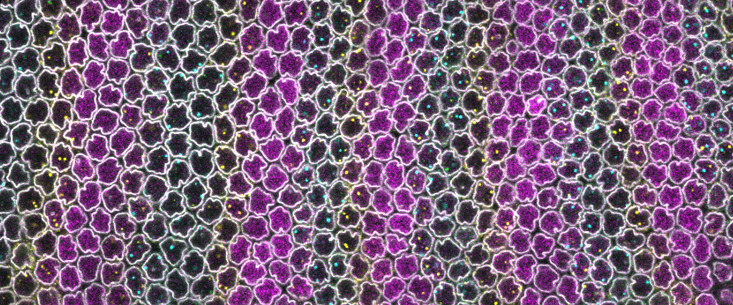
Embryo Patterning
Keywords
development, evolution, gene regulatory networks, Drosophila, imaging, modelling
Research interests
We are interested in developmental patterning systems: the collections of regulatory rules, biophysical processes, and specific conditions that enable multicellular animals to reproduce their own complex organisation each generation, starting from only a single, fertilised egg.
In particular, we are interested in the gene regulatory networks involved in anteroposterior (head-tail) patterning in bilaterian animals. We want to understand (1) the networks’ structure and regulatory logic; (2) the patterning dynamics they contribute to during embryonic development; and (3) how and why they have evolved and diverged over time.
We investigate these questions using the early Drosophila embryo (relatively simple and tractable) as well as more complicated, more widely representative bilaterian embryos, such as those of beetles and fish.
We make sense of the complex, dynamic behaviour of developmental gene regulatory networks by taking an interdisciplinary approach, which can be summed up in the slogan “microscopy, mutants, and modelling”. Quantitative imaging and computational image analysis allow us to characterise intricate patterning processes in fine detail; genetic experiments enable us to make informative functional perturbations; and computational simulations and theory empower us to develop and test explanations of how the whole system actually works.
Our research is also informed by an overarching comparative framework, because, in the famous words of Theodosius Dobzhansky, nothing in biology makes sense except in the light of evolution.
Current projects include:
- Determining the mechanistic basis for the robustness and scalability of early AP patterning in Drosophila.
- Quantitative analysis of Drosophila pair-rule gene regulation at single-nucleus resolution.
- Theoretical analysis of patterning in gene regulatory network systems with spatial interactions (in collaboration with Tom Hiscock, University of Aberdeen).
Join Us
We are hiring! If you are interested in joining the lab, please send an informal enquiry to Erik Clark outlining your research interests and include a CV.
